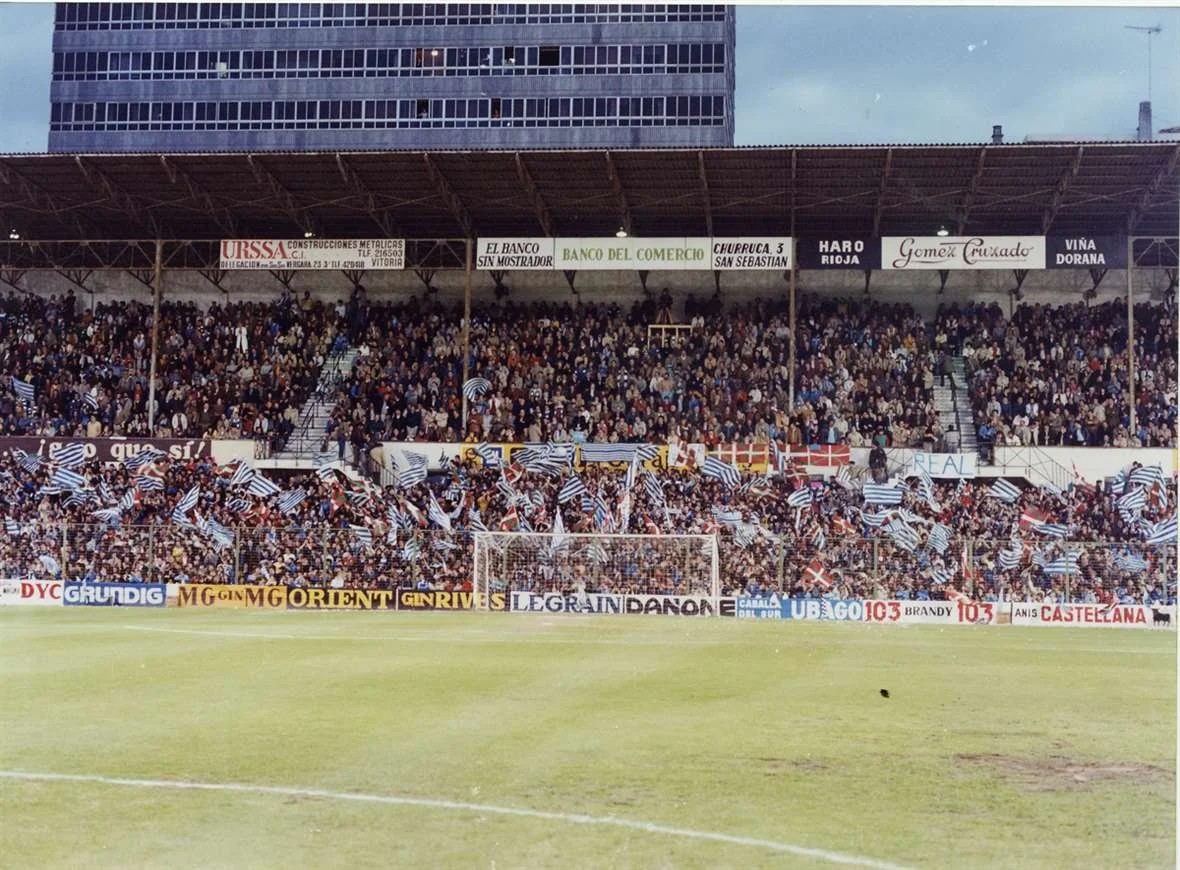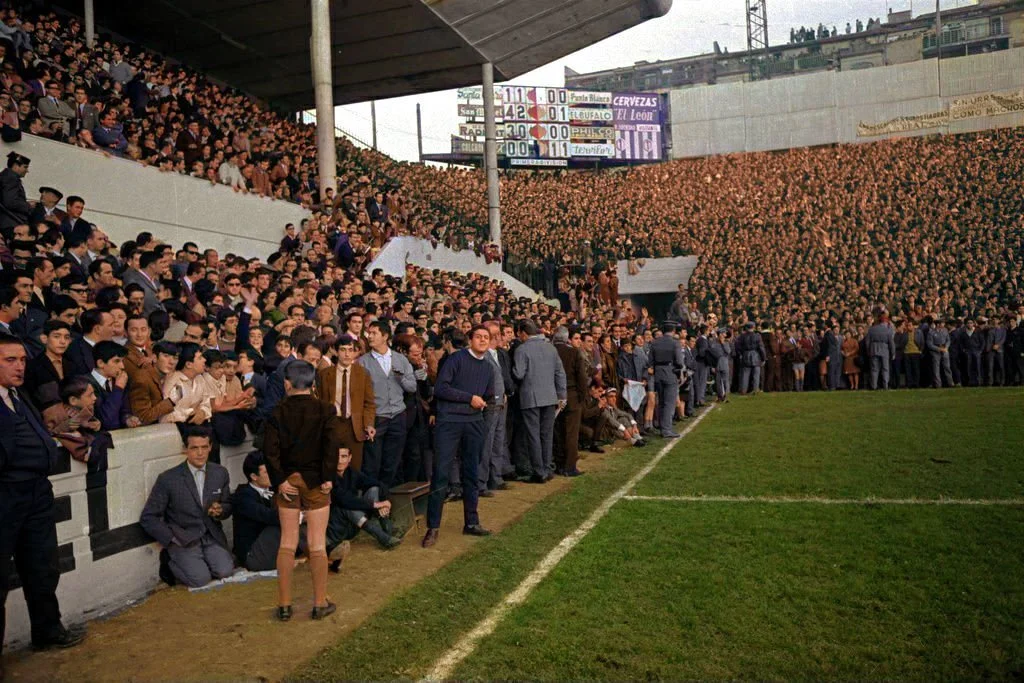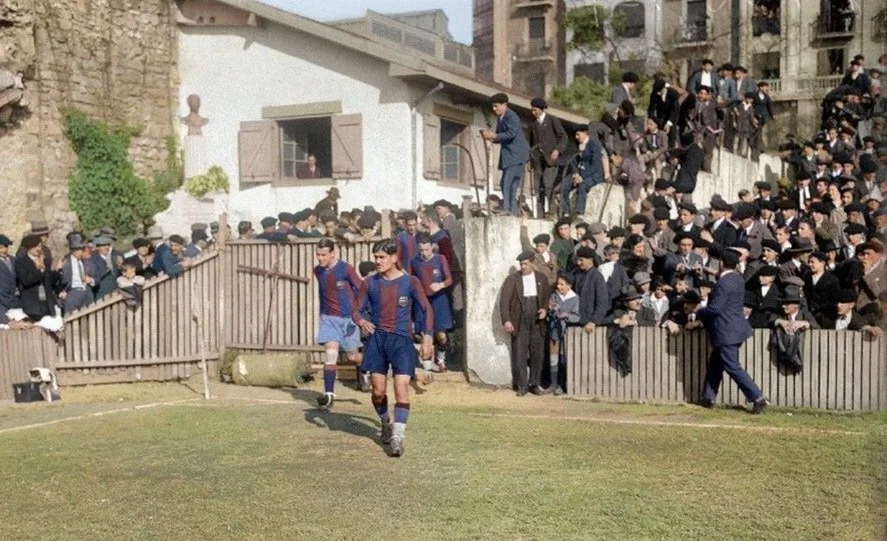Words: Miguel Sanchez
When Real Sociedad left their old Atotxa stadium in 1993 to move to Anoeta, one of the ground’s greatest mysteries was revealed. Indeed, its pitch was not rectangular, as one of the two ends was almost a metre wider than the other. Undoubtedly, a unique fact for a football stadium, although not the only one. When Atotxa was built in 1913, a curse was placed on it that Real Sociedad carried with it for almost 70 years.
Football had appeared in San Sebastián around 1901, and in 1904 San Sebastián Recreation Club was formed with a dedicated football section. Recreation Club was the first Guipuzcoan team to participate in the Campeonato de España in 1905, although that same year several players split off and founded San Sebastián Football Club. Unlike the Recreation Club, which soon built its facilities near Ondarreta beach, San Sebastián FC did not have a ground, so from 1907 they had to share the Atotxa velodrome with Club Ciclista de San Sebastián.
Football began to flourish, and San Sebastián FC were strengthened by several English players arriving in 1908, like Charles Simmons and George McGuinness. The club wanted to take part in the 1909 Campeonato de España, but as they were not legally registered, they could not participate. Finding it impossible to complete the necessary paperwork, San Sebastián FC decided to merge with Club Ciclista, which did have legal status. Thus was born Ciclista Football Club, which beat Athletic Club 4-2, Galicia FC 2-0 and Español de Madrid 3-1 to become Spanish champions in 1909.
After that success, players from the football section decided to emancipate themselves and founded Sociedad de Football, becoming Real Sociedad de Football in 1910. The club returned to Ondarreta, although it also played some matches at the Atotxa velodrome until 1912. As football grew more than cycling, the City Council decided to demolish the velodrome and build a football stadium on its remains. The stadium was inaugurated in October 1913, with Real Sociedad as the only tenant.
But there was one person unhappy with that situation - Julian Comet. This French citizen had been the great pioneer of cycling in San Sebastian, organising the city's first cycling race in 1887 and participating in the construction of the Atotxa velodrome, defined at the time as one of the best tracks in Europe. It was also he who created Club Ciclista de San Sebastián in 1907, and who lent the footballers of San Sebastián FC their legal status so that they could take part in the 1909 Campeonato de España. In exchange, the City Council left his team without a velodrome. Comet was so angry that he cursed Real Sociedad: ‘Real shall never be champions again’. How did Real deal with this curse? Certainly, there were seasons in which the ‘txuri-urdin’ club came very close to lifting a trophy, but without succeeding.
First in 1928, when they reached the Cup final against FC Barcelona. They twice drew 1-1 in two matches marked by several controversial refereeing decisions unfavourable to Real. A third match was needed, but was not played until a month later, as eight Real players had to join the national team for the Amsterdam Olympics in the meantime. FC Barcelona, not sending any players due to their professional status, won the decisive match 3-1. In 1931, Real finished the Liga with 22 points, tied at the top of the table with Athletic Club and Real Racing, but the title went to the Bilbao side, who enjoyed a better goal difference.
After several up-and-down years, during the 1950/51 season Real looked like they could fight for the league title. They were just two points behind the leaders with only eight games to go but, with two draws and eight defeats in their last 10 away games, they finished 5th, five points behind Atlético de Madrid. That same year they reached the Cup final, again against FC Barcelona, but suffered two injuries during the match and ended up losing 0-3.
Throughout the 1979/80 season, Real were undefeated for the first 32 matchdays of the league, a competition record. However, they lost on the second last matchday, the 33rd, against Sevilla (1-2) and conceded the lead to Real Madrid. Both teams won in the last match, so the title went to the ‘madridistas’ by just one point. Reportedly, the satisfaction of extending their unbeaten run made Real Sociedad accept draws in several matches instead of seeking the victory they lacked to win the championship.
When it seemed that Comet's curse would continue to cross Real's destiny, however, the title came. It was the following season, 1980/81, in which Real started with doubts and two early defeats. Although they did not convince through their play, they were always amongst the top four, and in the final stages of the championship they took advantage of Atlético de Madrid's slump and of a 3-1 victory over Real Madrid to reach the top of the table. Real needed a draw in their final game against Sporting Gijón and, after going 1-2 down, found the net in the 89th minute. Real finally put an end to the Comet curse and, to confirm it, in 1982 they won the Liga and the Supercopa, created that same year.
However, after those titles, some sceptics remained. After all, when Julian Comet set his curse, there was neither La Liga, which started in 1929, nor the Supercopa, but only the Campeonato de España (or Copa del Rey). Overcoming those doubts, Real returned to a Copa final in 1987 and ended up beating Atlético de Madrid on penalties.
After winning the 2020 Copa del Rey, Comet's curse seems to be completely forgotten now. However, walking around the square that was once Atotxa, one comes across a sign warning children that it is forbidden to play football there. Eventually, though much later than he would have wished, Comet managed to stop football being played in the velodrome that he had once helped to build, back in 1888.
First match of the Primera División in Atotxa, 1929.
Photo Credit: Pascual Marín
Real Sociedad playing a match in Atotxa, 1952.
Photo Credit: Paco Marí
Atotxa from above.
Photo Credit: The Stadium Guide
Real Sociedad fans celebrate inside Atotxa.
Photo Credit: Real Sociedad
Fanatic supporters pack Atotxa past its capacity.
Photo Credit: El Abuelo del Fútbol
Barcelona players take to the field at Atotxa, 1920.
Photo Credit: Catalunya Color








